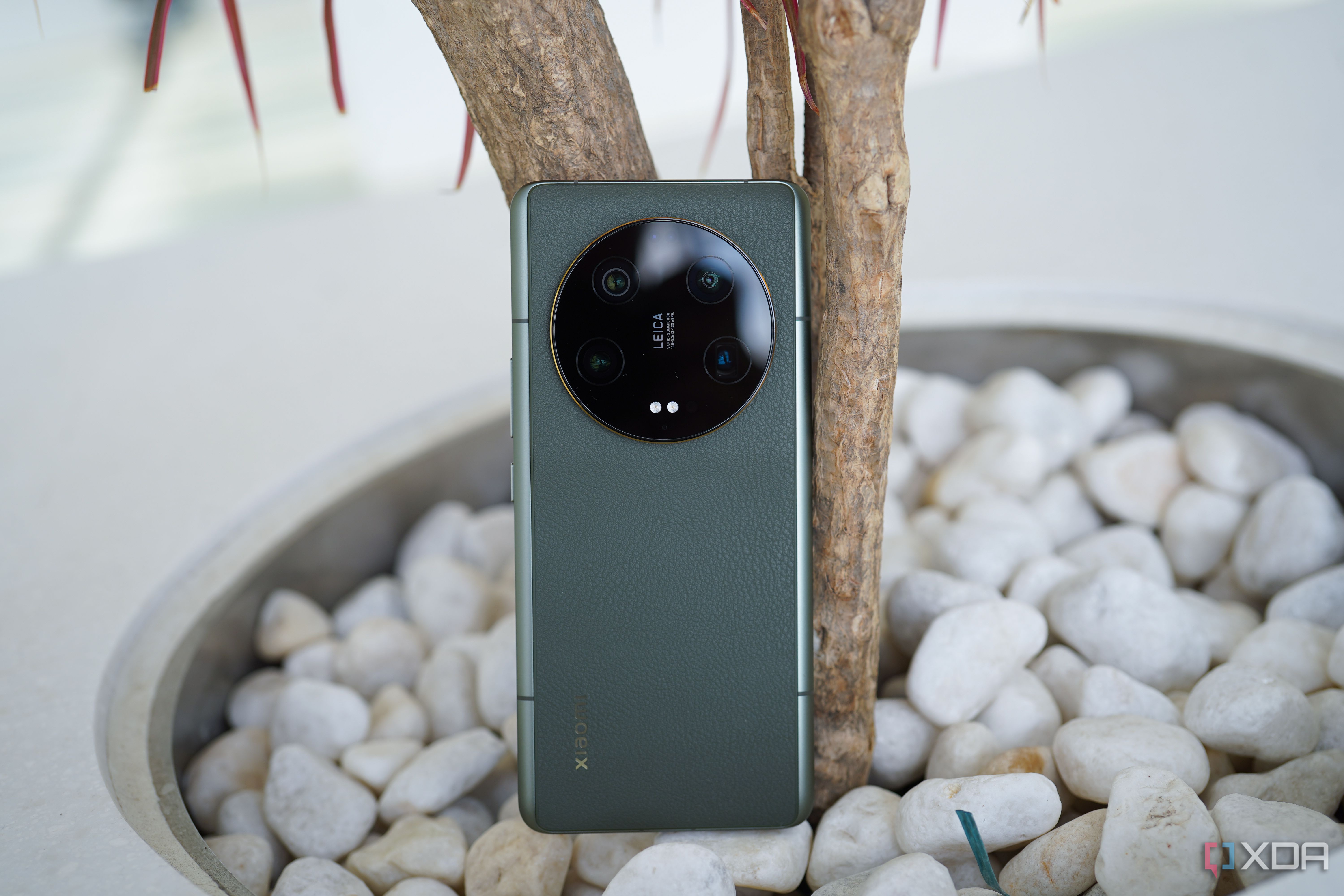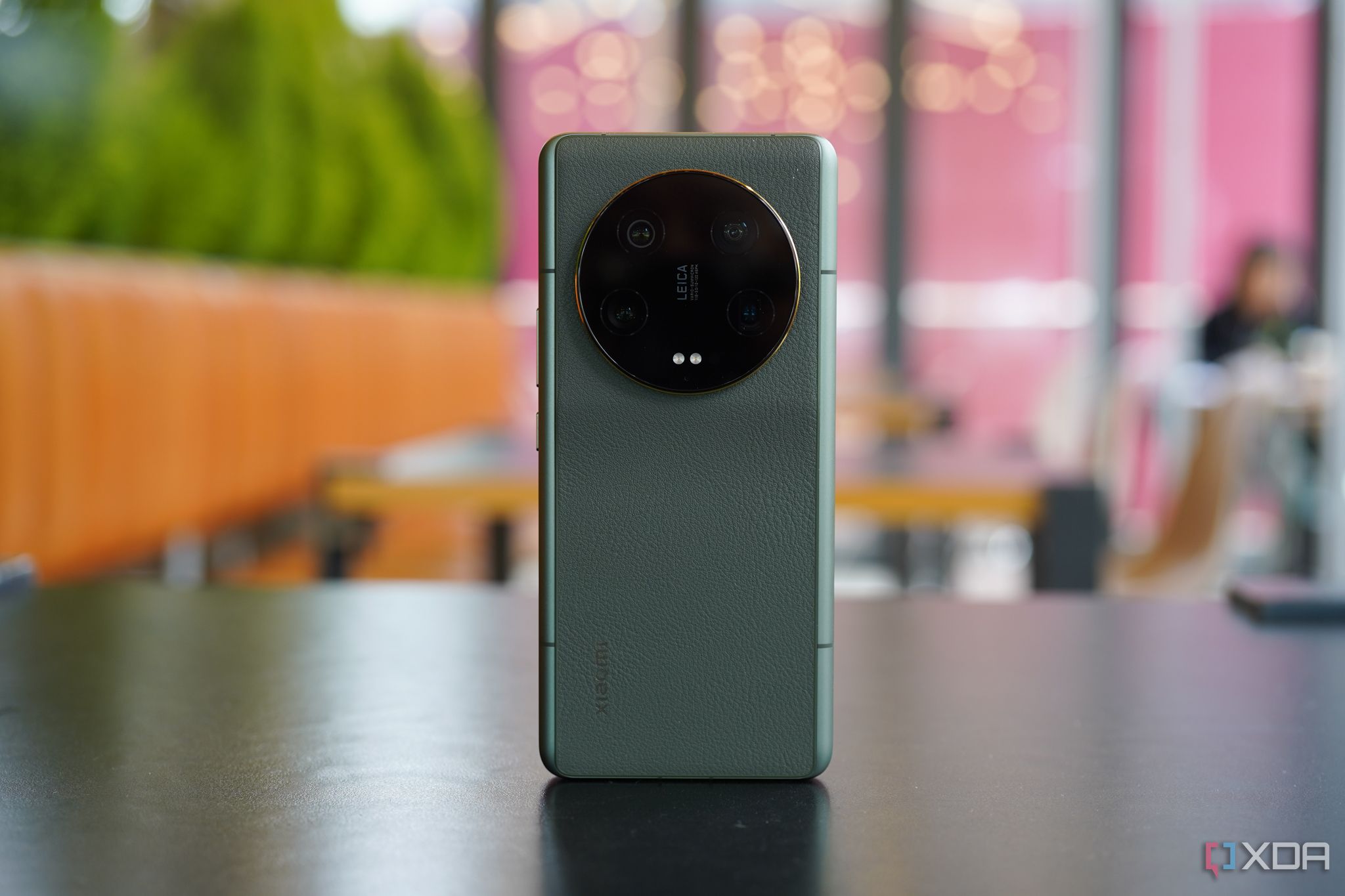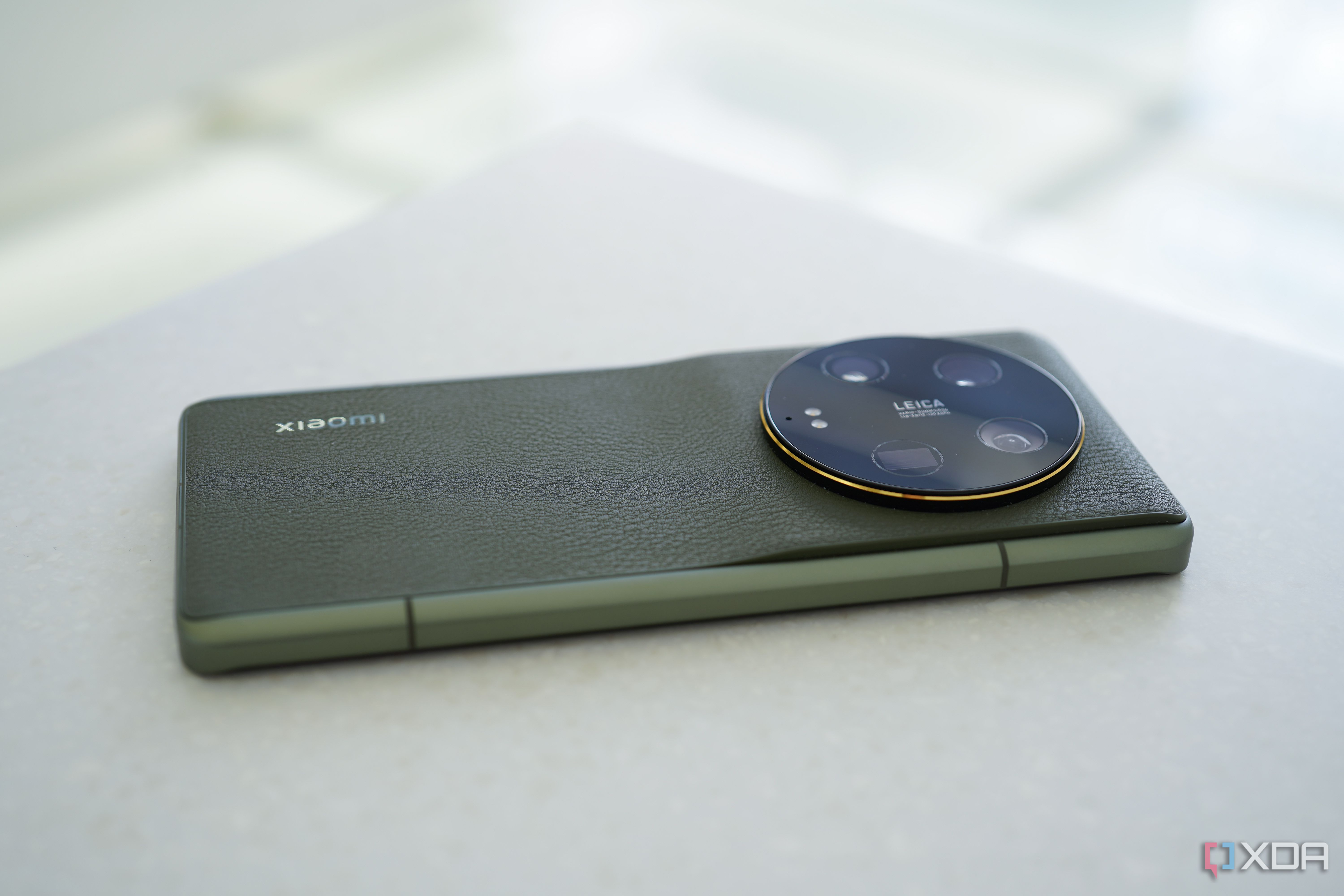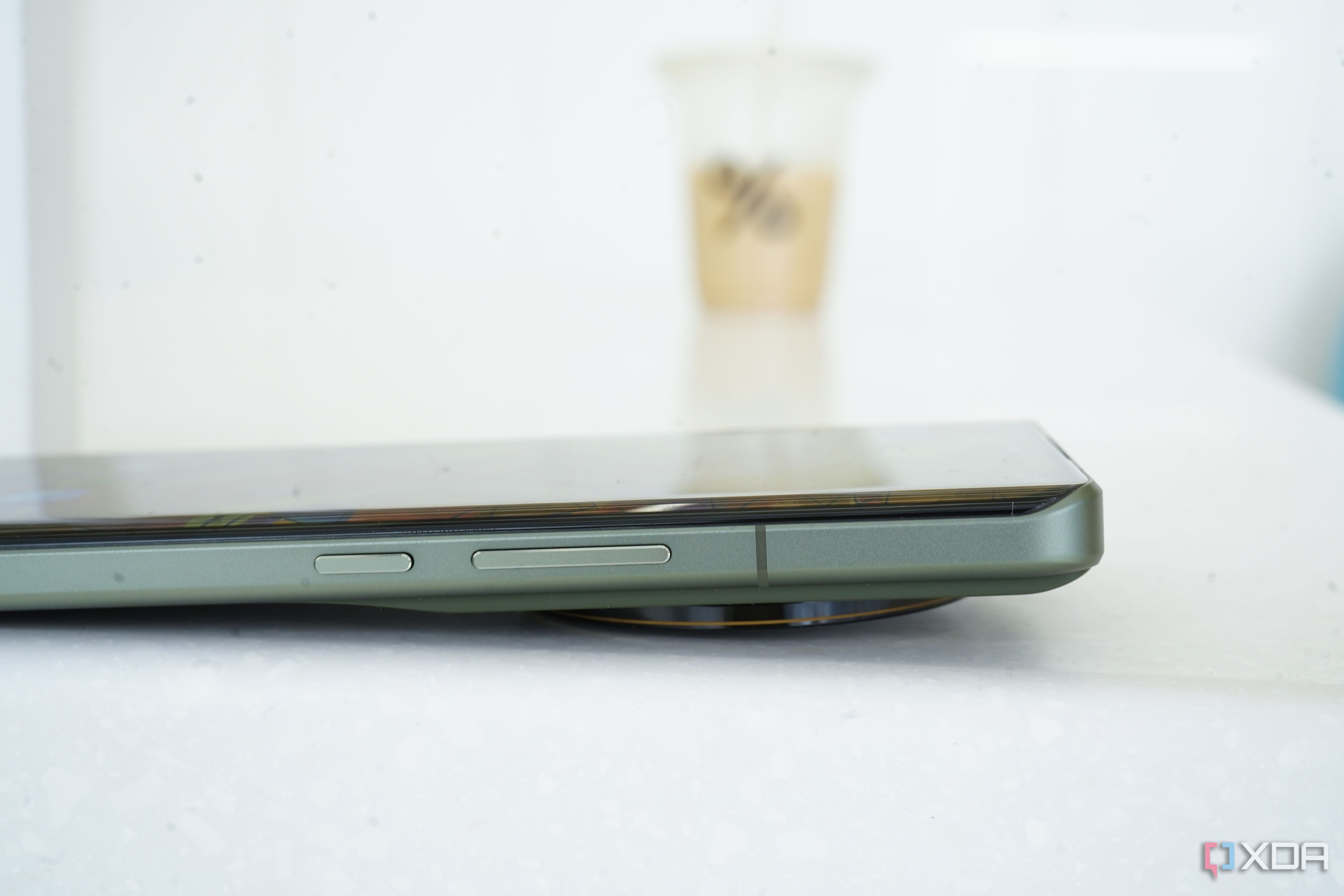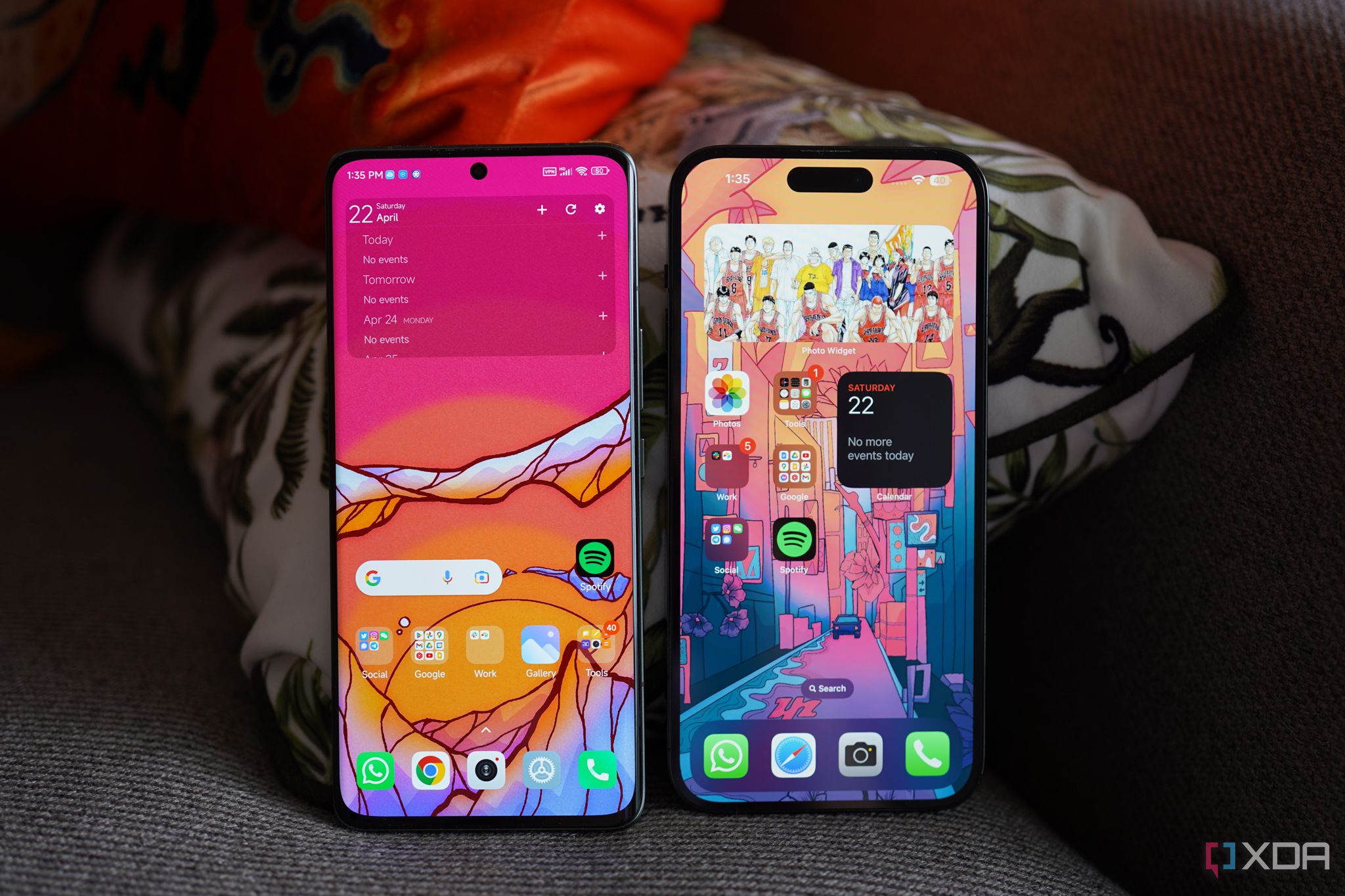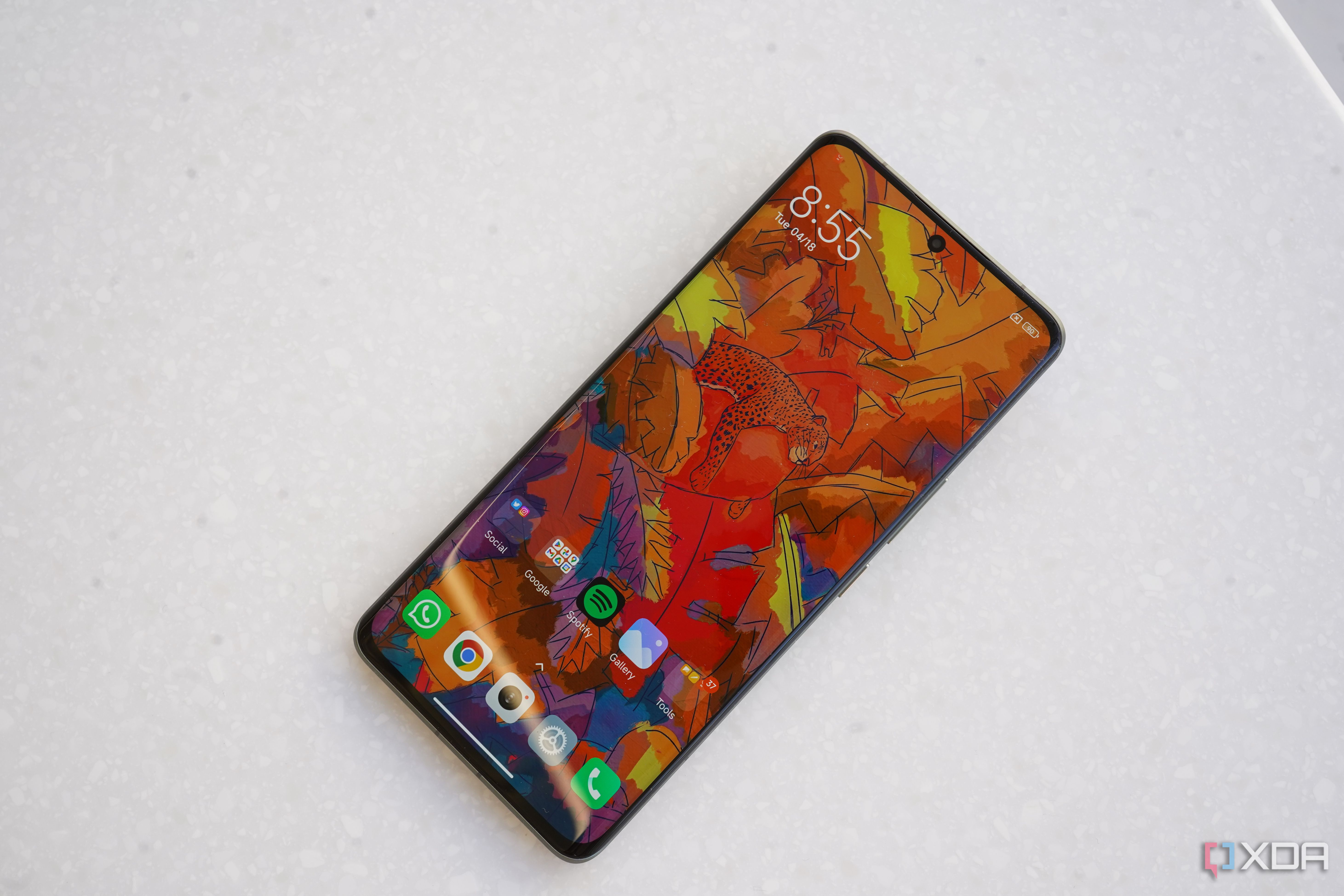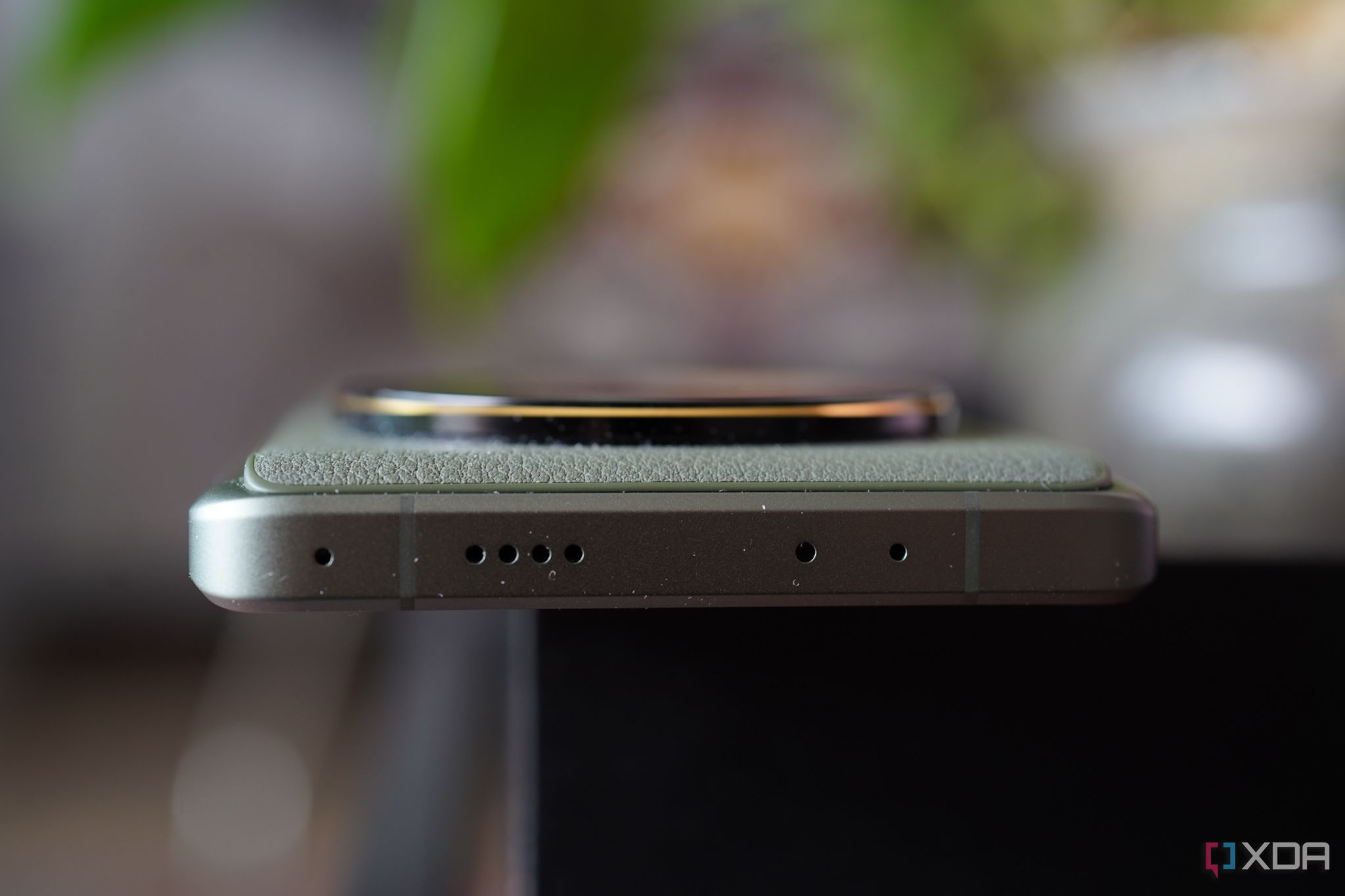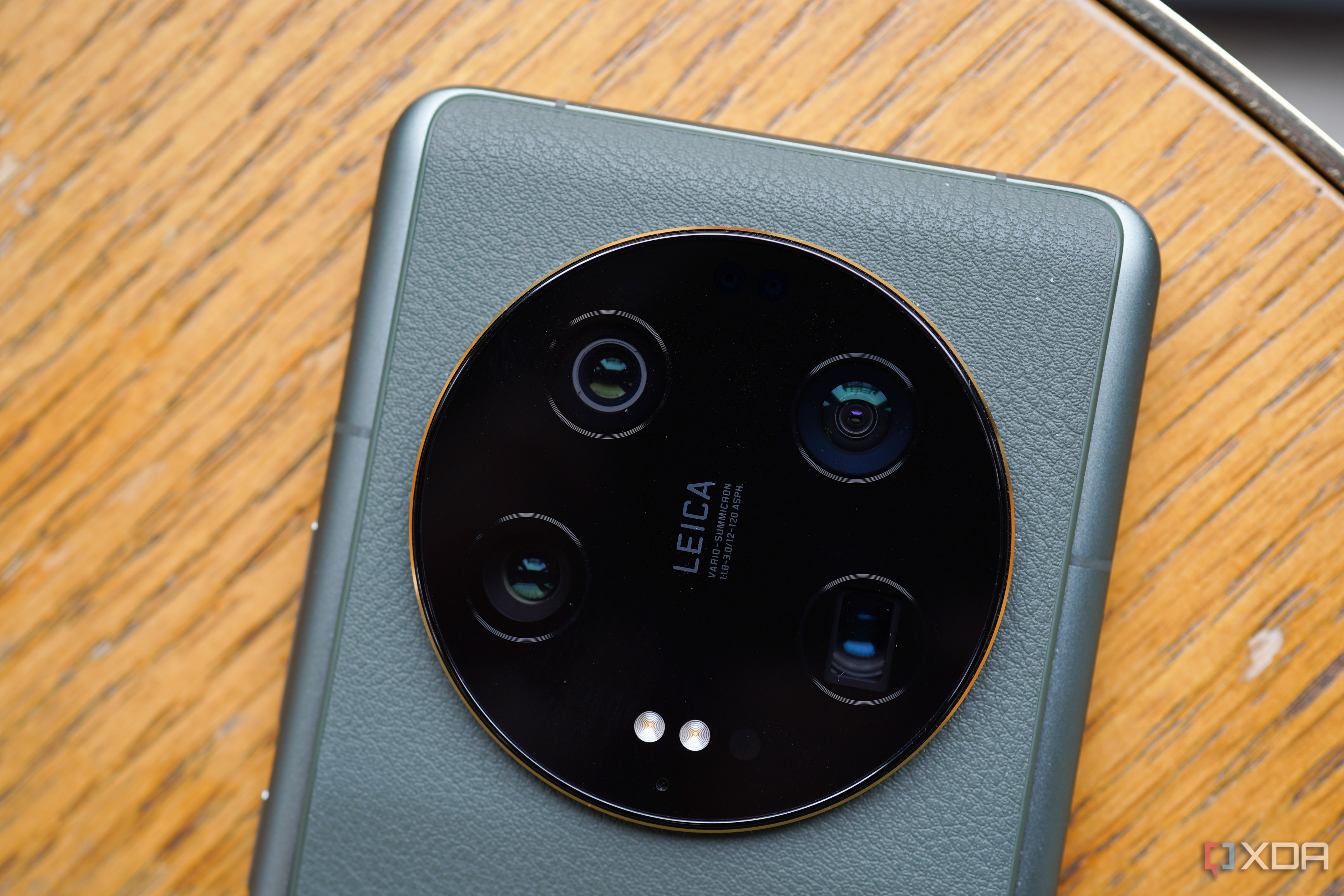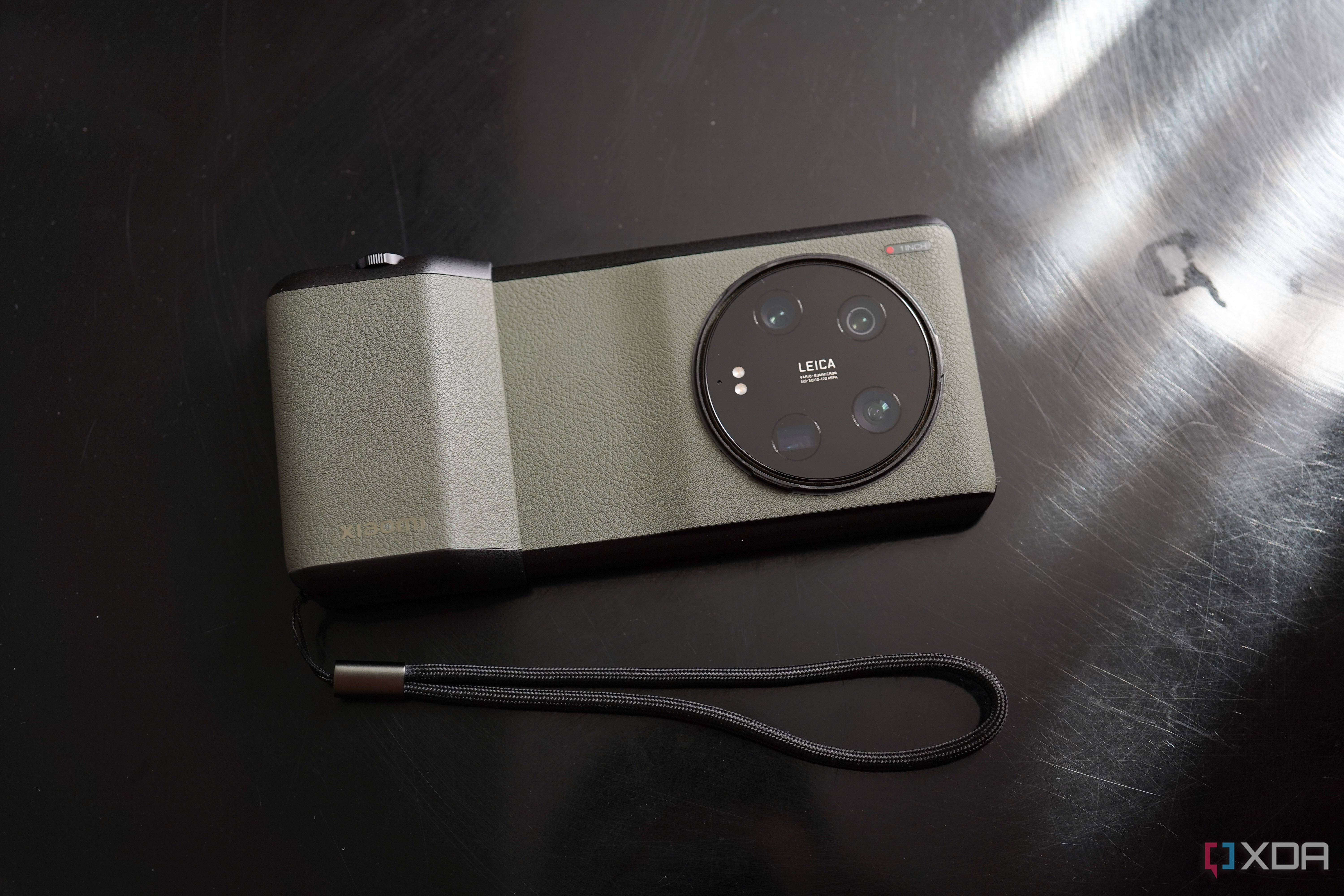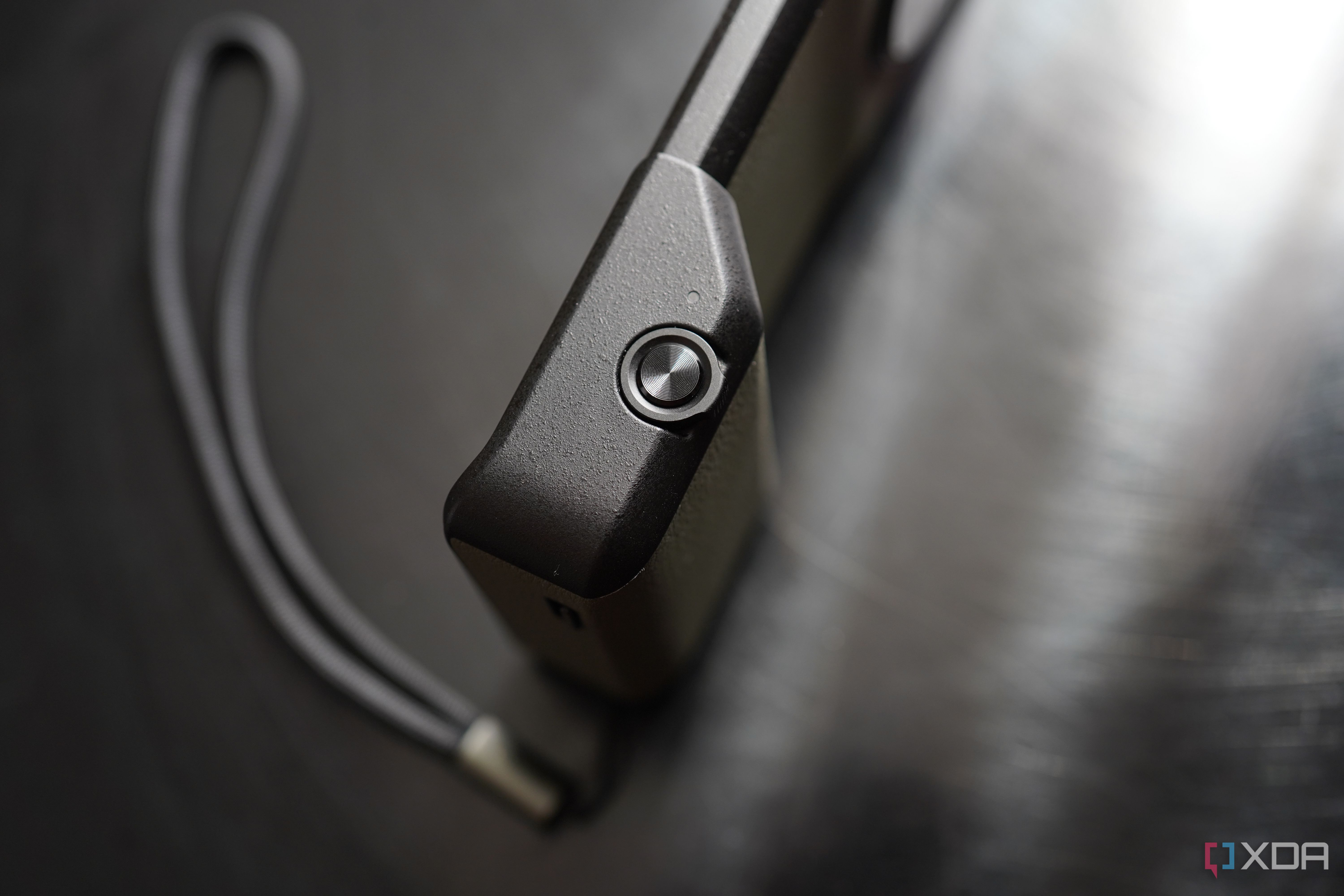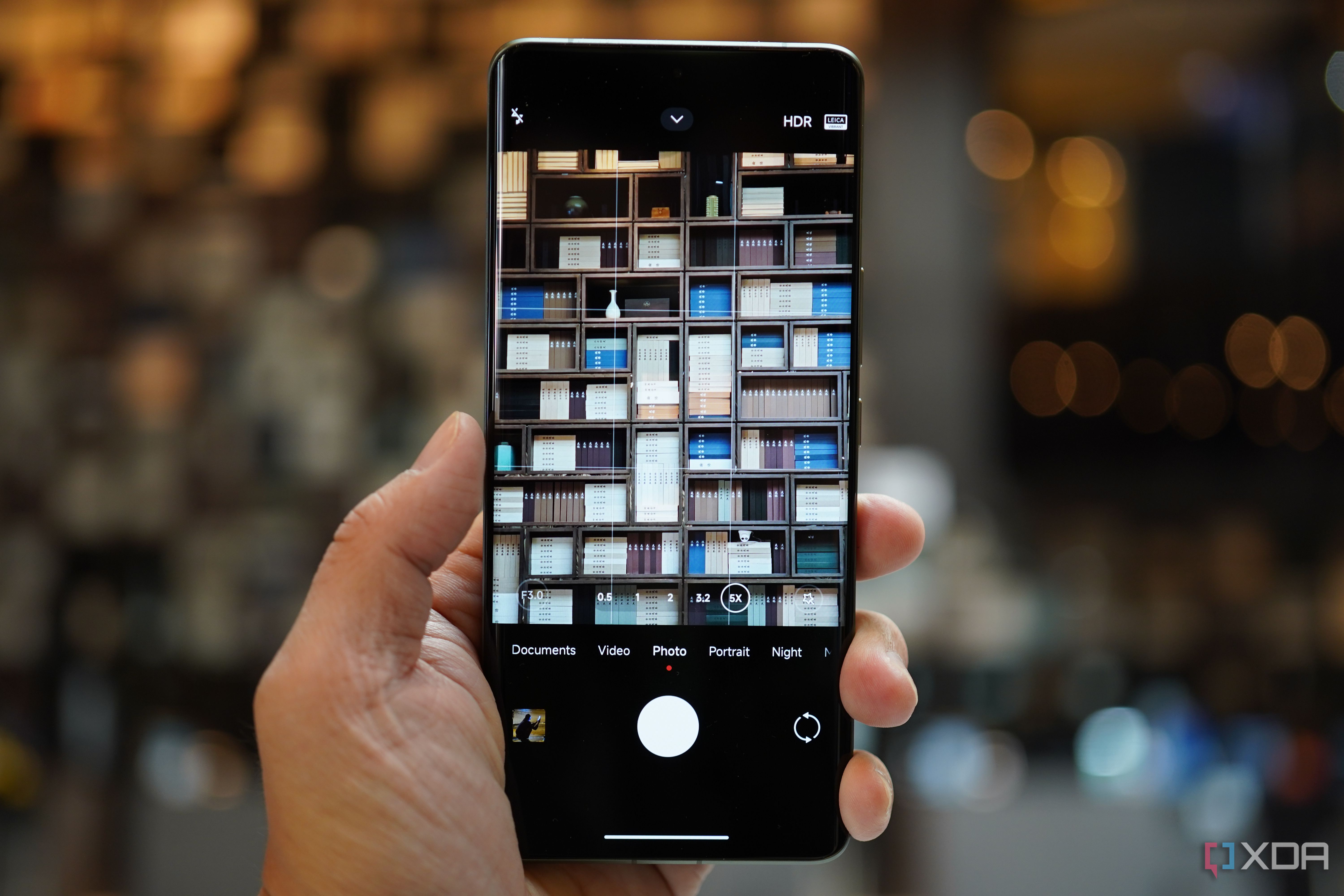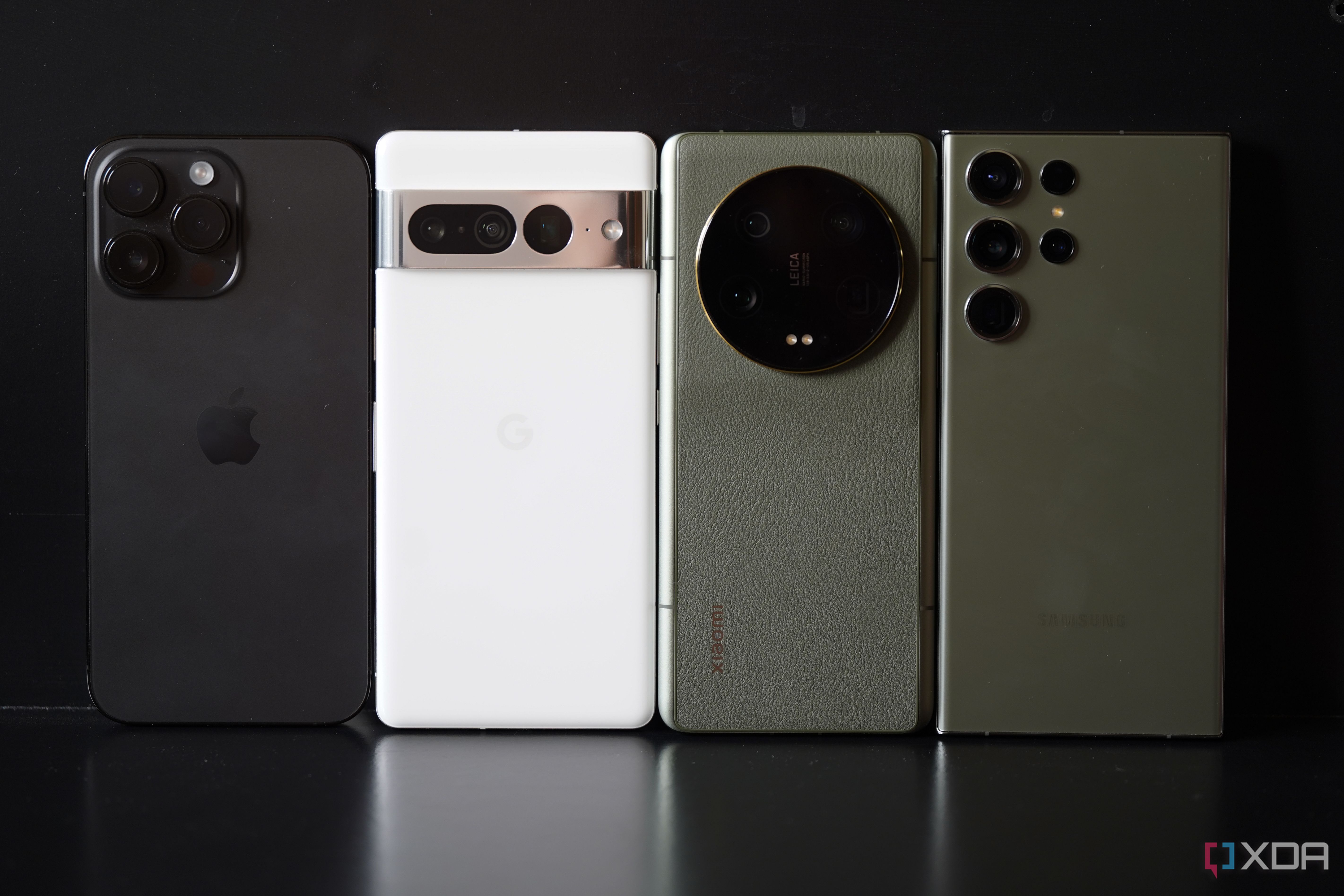Quick Links
Last year's Xiaomi 12S Ultra was in my (and many reviewers') opinion the best smartphone camera of 2022 due largely to its new 1-inch type sensor developed by Sony. However, it was only sold in China. This year's Xiaomi 13 Ultra finally goes "global" (or, at least, to Southeast Asia and parts of Europe along with China), but is now in a much heavier market since that sensor can now be found in several other phones. So for the 13, Xiaomi made refinements around that star sensor, such as adding a variable aperture, improving peripheral cameras, and even adding a camera grip accessory that turns the device into more camera than phone. But are these enough to keep the lead it built over rivals last year?
After using the phone heavily for a week (and having tested every flagship phone available), I can say that the Xiaomi 13 Ultra doesn't bring the same immediate wow factor the 12S Ultra did. That groundbreaking 1-inch sensor is no longer new, but it's still a more polished and well-rounded device. However, this phone's price in Europe will likely be so high that it will struggle to find buyers. But for those in Asia, where retail pricing is lower, this is a worthy look for someone who really values camera performance in a phone.
About this review: This review was written after eight days of testing a Xiaomi 13 Ultra provided by Xiaomi. The company did not have input in this article.
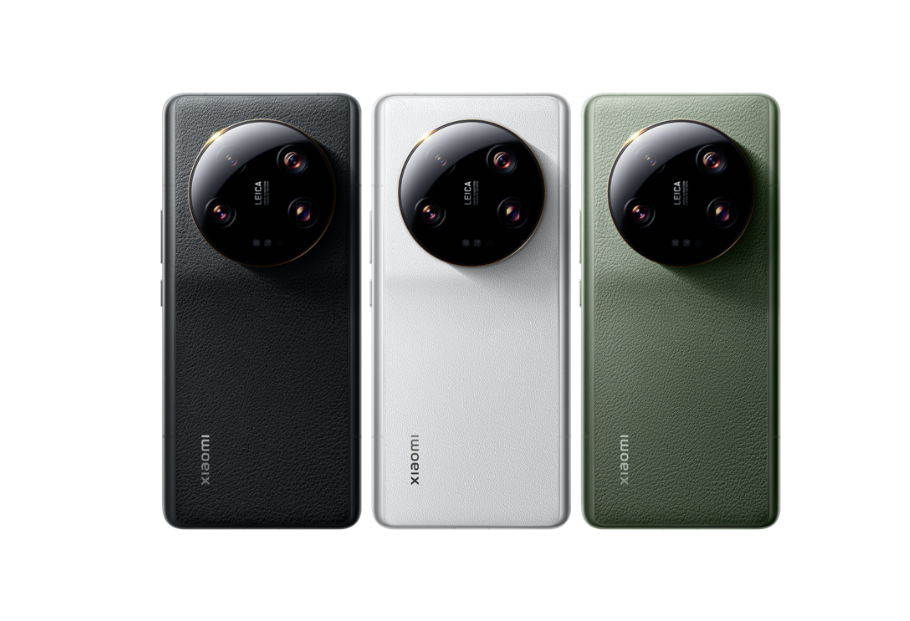
Xiaomi 13 Ultra
If you want a smartphone with a capable all-around camera system, this is it
The Xiaomi 13 Ultra brings back that 1-inch Sony IMX989 sensor but adds a new variable aperture that can switch between f/1.9 an f/4.0. The zoom lens and ultrawide camera also gained larger image sensors too for an all-around strong camera system.
- Brand
- Xiaomi
- SoC
- Qualcomm Snapdragon 8 Gen 2
- Display
- 6.78-inch OLED, 120Hz, LTPO 3.0, 2600 nits max brightness
- RAM
- 12GB, 16GB, LPDDR5X
- Storage
- 256GB, 512GB, 1TB, UFS 4.0
- Battery
- 5,000mAh
- Ports
- USB-C
- Operating System
- Android 13
- Front camera
- 32MP
- Dimensions
- 6.43 x 2.94 x 0.36 inches (163.2 x 74.6 x 9.1mm)
- Colors
- Green, Black (white model for China only)
- Weight
- 227g
- IP Rating
- IP68
- 1-inch sensor still awesome, but other cameras are also excellent
- Premium construction and build quality
- The brightest screen in any smartphone right now
- Variable aperture only useful in niche situations
- Priced nicely in China, but European pricing will likely be too high
- Leica portrait filters hit and miss
Xiaomi 13 Ultra: Pricing and availability
The Xiaomi 13 Ultra is on sale in China now starting at ¥5,999 (around $875) for the 12GB RAM, 256GB model. The 16GB RAM, 512GB variant is priced at ¥6,499 (around $945). The highest tier 16GB RAM, 1TB model costs ¥7,299 ($1,063).
Xiaomi has promised a "global" rollout, but exact markets and pricing haven't been announced yet. My educated guess would be that the global launch markets include the U.K., Spain, Italy, Hong Kong, Singapore, and India. Since the lower tier Xiaomi 13 Pro has a European retail price of €1,299 ($1,425), the Ultra will likely be priced €1,399 or higher, which would make this one of the most expensive non-folding phones on the market.
I've asked Xiaomi why there is such a major discrepancy between local China pricing and European pricing, and the unofficial answer is there are a lot of extra costs that come with distributing phones in Europe, including tariffs, conversion rate, shipping fees, and European distributors and retailers taking a cut.
Hardware and design: Leathery and metallic
The Xiaomi 13 Ultra continues the design language of the 12S Ultra: It's a vegan leather-backed phone with a gigantic circular camera module. Xiaomi makes a couple of tweaks compared to the 12S Ultra. For one, the faux leather backplate doesn't cover the entire back of the phone, instead leaving the sides at the edges exposed. The sides are also not glass, but an extension of the aluminum side chassis.
The sides of the phone have also been made flat and wider, but the screen still curves on the side. It now has a more unique feel, being a curved screen phone that feels like a flat panel phone. This design perhaps addresses the cultural divide that I've noticed as an Asian-American straddling both cultures. Western reviewers overwhelmingly dislike curved screens, while Asian consumers think curved screens feel more premium. This gives users a bit of both.
The screen here is a 6.78-inch OLED panel with up to a 120Hz refresh rate. In another case of Chinese phone brand oneupmanship, this screen, which can get up to 2,600 nits maximum brightness, is the new "brightest panel in smartphones" beating the previous champ Oppo Find X6 Pro by 100 nits. It's a petty spec war, but one that benefits consumers. It's interesting that Samsung has chosen to sit back and let rival phones overtake it in display brightness when it's held that title for so long. Under harsh direct sunlight, I can clearly see an iPhone 14 Pro Max or Xiaomi 13 Ultra screen better than the Galaxy S23 Ultra screen.
The Xiaomi 13 Ultra is thick and heavy, at 9.1mm thickness (this doesn't include the protruding camera bump, which would push its thickness to 11mm) and tipping the scales at 227g, but the in-hand feel is comfortable, with no hard edges jabbing at my palm. I also love the two-tone in-hand feel of textured, warn vegan leather and cold, hard metal.
Internals: The latest everything
The Xiaomi 13 Ultra cuts no corners and uses the absolute best components available right now, with the Qualcomm Snapdragon 8 Gen 2 chip, UFS 4.0 storage up to 1TB, and LPDDR5X RAM up to 16GB. The haptic vibration engine is strong and among the best in Android scene; there's a large liquid cooling thermal plate underneath to keep the phone cool; and the 5,000 mAh battery can be charged at 90W wired speed or 50W wirelessly.
There are symmetrical stereo speaker grilles at the top and bottom of the frame, and the USB-C port is now USB 3.2 after using the outdated USC 2.0 for years. IP68 water- and dust-resistance wraps up the package. There's even an IR blaster at the top of the phone.
Cameras: So much hardware, but not all necessary
As mentioned, the main camera here is a 50MP Sony IMX989 with a 1-inch type sensor, which is the same as last year. This image sensor, at the time of release last summer, was significantly larger than anything else seen in smartphones at the time, which resulted in photos with more details, dynamic range, depth-of-field, and light intake ability.
But in the months since, Oppo and Vivo have also adopted the exact same sensor in their flagship phones. Honor's Magic 5 Pro didn't go quite as large but came close with a 1/1.1-inch main sensor. In other words, the 12S Ultra's previous sizable advantage has shrunken a bit — at least against other Chinese phones.
So Xiaomi "improved" the 1-inch sensor by giving it a moving shutter that allows the camera to switch from f/1.8 to f/4.0 aperture. When you switch between the two f-stops, you can actually see the camera lens shutter open and close. This is not a new trick, as Samsung tried it with the Galaxy S9 series, and more recently, Huawei introduced an even superior five-stop variable aperture in the Mate 50 Pro.
The idea of changing the aperture (or, as some photographers call it, changing the f-stop) is that it changes the camera lenses' light intake ability and focus pane (which affects how much bokeh is in a shot). When I snap product shots with my "real" camera (Sony A7C), for example, I often change f-stops, as it drastically affects how my photos look. But on a smartphone camera, the sensor and physical size of the lenses simply aren't big enough for the aperture to make a drastic difference. On the Galaxy S9 phones, it was virtually a useless gimmick (Samsung dropped it after a year), and even on last fall's Mate 50 Pro, I didn't see many reasons to change f-stops.
I can't say the story has changed much with the Xiaomi 13 Ultra's variable aperture. Below are some images snapped by the 13 Ultra in default f/1.9, and then f/4.0 aperture. (Note: I usually always turn off the watermark on Chinese phones, but for the sake of easy identification I left the watermark on for most photos used in this review.)
Shooting in f/4 widens the focus pane, so more of the shot, including the background, is in focus. But other than very niche situations, like when you're shooting with multiple subjects/objects at varying distances from the camera, I don't really see the need to switch to f/4. In fact, Xiaomi seems to agree. When I first used the phone, there was a button to toggle between the apertures directly in the camera viewfinder (next to the zoom dial), but a software update a few days into the review period removed that button entirely. You now have to jump into a setting sub-menu to make the switch. It's almost as if Xiaomi conceded you won't have to make that aperture switch much.
However, just because its biggest new hardware feature is a bit gimmicky doesn't change the fact that the Xiaomi 13 Ultra's camera hardware is absolutely premium and can only be rivaled by the Oppo Find X6 Pro in terms of hardware. That 1-inch sensor absolutely blew every other phone's main camera out of the water last summer, and even if the gap has closed, it's still the king of camera sensors right now. And personally, I think Xiaomi's Leica-assisted color science, which tends to keep contrast stronger, looks more visually appealing than what the Oppo Find X6 Pro's main sensor can do.
Of course, the Oppo's camera is also using the same Sony IMX989 sensor, so both photos are almost equally detailed. To see the benefits of the 1-inch sensor, you have to compare it against smaller sensors. Below are Xiaomi 13 Ultra shots against the iPhone 14 Pro Max.
The larger image sensor captures more image information and dynamic range, which means Xiaomi's software doesn't have to do as much fixing, resulting in more natural, organic-looking photos. The iPhone's images appear flatter, with less depth-of-field, and also have significantly more noise and signs of digital oversharpening if zoomed in 100%.
The same is true when the Xiaomi 13 Ultra goes against the Samsung Galaxy S23 Ultra. Any time you zoom into photos to pixel peep, Samsung's images are noisier, with a more processed look.
So yes, that 1-inch sensor is still awesome. But where this phone improves over the 12S Ultra is in the ultrawide and zoom lenses, which all use the IMX858 sensor. This is a new sensor that launched in April and features a 1/2.5-inch sensor. This sensor size can be considered large for an ultrawide and zoom lens, and only Oppo Find X6 Pro's ultrawide and zoom lenses can claim to have larger sensors. But Xiaomi also gave these peripheral lenses a relatively fast aperture, so they might just be more impressive overall.
Let's take a look at the two zoom lenses first. The Ultra packs a 75mm (3.2X zoom) telephoto and 120mm (5X) Periscope, with a respective aperture of f/1.8 and f/3. These focal lengths are ideal for street photography and portraits. The larger sensor and faster aperture combine for very sharp, detailed 3.2X or 5X photos, even in low light conditions. At 10X and 15X focal ranges, you'd need better lighting, but shots are still relatively clean.
If you're wondering how the Xiaomi 13 Ultra fares against other top zoom phones such as the Oppo Find X6 Pro and S23 Ultra, its zoom lenses hold up very well against the other two top dogs, but results differ from shot to shot. Generally, Xiaomi's short zoom (3.2X) lens produces sharper and more visually appealing images than both Oppo and Samsung most of the time. But at the 10X range, Oppo regains the lead thanks to its largest (by far) periscope sensor size. The Galaxy S23 Ultra's 10X zoom actually loses to both phones often. However, if we go beyond 20X, then the Galaxy S23 Ultra regains the lead. Long story short, the Xiaomi 13 Ultra is a top three best zoom phone.
That 13 Ultra's ultrawide sensor is great too thanks to its fast f/1.8 aperture. In low light performance, it completely trumps the iPhone 14 Pro's ultrawide. But the best ultrawide camera on the market is still the Oppo Find X6 Pro' because of its large 1/1.56-inch image sensor.
The selfie camera is where the Xiaomi 13 Ultra falls short. It struggles with exposure, and in video can't shoot in 4K.
I've only really scratched the surface with the camera experience of the Xiaomi 13 Ultra. There are a ton of other shooting modes such as a dedicated street photography mode (which shoots at 35mm focal length with f/4 aperture for faster focus) and a myriad of Leica-inspired filters and portrait modes. Just know that this is absolutely one of the very best camera phones around, and it actively inspires me to snap street photography. Below are more photo samples. Do pay attention to the focal length listed in the watermark; some of the shots below are 10X or 20X shots.
To really play up this phone's ambitions of being a "real camera," Xiaomi designed a separate camera grip accessory. In China, it retails for 799 yuan, which is around $120. I have no idea if this will be released in markets outside China, or for how much. The entire kit includes a protective case, a detachable camera grip with a dedicated camera shutter button and zoom dial, and even a filter thread ring.
The zoom dial and dedicated shutter button are well-built and really add to the experience. You can even half-press the shutter button to see where the lens is focusing.
I personally don't like adding cases to my phones because I don't like covering a flagship's premium design, but many of my industry peers adore them. I can also see Leica camera enthusiasts wanting to own this kit as a collector's item. At roughly $120, it's cheap enough in my opinion.
Overall performance: hard to find fault
The Xiaomi 13 Ultra, with a Snapdragon 8 Gen 2 chip and an ample amount of RAM and storage, is a strong performer. Thermals are also much improved over the mediocre Xiaomi 12 Pro thanks in part to a new liquid cooling plate in the phone, but it's still mostly due to the Snapdragon 8 Gen 2 being such an efficient chip.
The 5,000mAh battery gives the phone excellent endurance. Most of this phone's review period actually overlapped with my vacation to Shanghai and Seoul. This meant I used the phone a lot more heavily than a normal workday, as I was out 12–14 hours a day, used maps to navigate chunks of the day, and snapped a lot of photos and videos. Despite the heavy use, the Xiaomi 13 Ultra made it through each day with battery to spare. I never had to pull out the charger or portable battery pack.
Charging can be done at 90W speeds with the included charging brick, or 50W wirelessly if I use Xiaomi's proprietary fast charger. Without a typical Qi charger, expect charging speeds to get closer to 20W. I only tested the cabled fast charging, and I was able to go from 0 to 100 in a little over 30 minutes.
Software: Fast, fluid, but with some bloat
The Xiaomi 13 Ultra runs MIUI 14 based on Android 13. The version I'm testing is Xiaomi's China ROM, but since this phone will launch outside China, a global ROM will be available. This is good news for consumers because the global ROM is better. The China ROM doesn't ship with Google apps, and while installing them isn't hard (it's just a matter of installing the required APKs), the phone doesn't have native support for some core Google services like Android Auto. I also can't get the Pixel Watch to pair with the China ROM while it can pair with global ROM just fine.
The China ROM also ships with a lot of Chinese third-party apps, and while most can be uninstalled or disabled, it's still a tedious process. I'm also not a fan of MIUI splitting the control center and notification panel into two separate panes. The global version of MIUI allows you to disable this, but not the global version.
The thing is, most of my gripes are with the China ROM, so if you purchase the global version of this phone, these issues won't be here. And for the most part, MIUI is fast and fluid, and the phone behaves as it should.
Should you buy the Xiaomi 13 Ultra?
You should buy the Xiaomi 13 Ultra if:
- You take mobile photography seriously and want a phone to do the same
- You live somewhere in which the Xiaomi 13 Ultra will sell officially
- You like Xiaomi flagships
You should not buy the Xiaomi 13 Ultra if:
- You prefer lighter, sleeker phones
- You live in Europe and saving some money on a phone purchase is important
The Xiaomi 13 Ultra is obviously a hardware powerhouse and should make every best phones list. It does lack the "oomph" of the 12S Ultra, because that 1-inch sensor is no longer that innovative, but it would be unrealistic to expect a phone line to make the same big hardware leap on an annual basis. This year's 13 Ultra is about refinement, and it succeeded.
With that said, it's quite tricky to wrap up my thoughts because the discrepancy between Xiaomi's China and European pricing is so extreme. In China, the phone costs about the equivalent of $875, so it's an easy recommendation, offering arguably better hardware than the iPhone 14 Pro Max or Galaxy S23 Ultra at a lower price. But in Europe, the phone will likely cost up to €1,399, which would be around $1,500. That's a very hard sell for European consumers. Pricing for other regions of Asia will vary but will likely sit closer to China pricing than European pricing.
Of course, everyone's value of the dollar is different, so whether the phone is worth it depends on the reader. I think photography enthusiasts, particularly those who are fans of the Leica branding, may find the Ultra appealing. For more casual users, perhaps a sleeker, cheaper phone that still has a very strong camera, like the Google Pixel 7 Pro or OnePlus 11, would make better sense.

Xiaomi 13 Ultra
The Xiaomi 13 Ultra brings back that 1-inch Sony IMX989 sensor but adds a new variable aperture that can switch between f/1.9 an f/4.0. The zoom lens and ultrawide camera also gained larger image sensors too for an all-around strong camera system.

